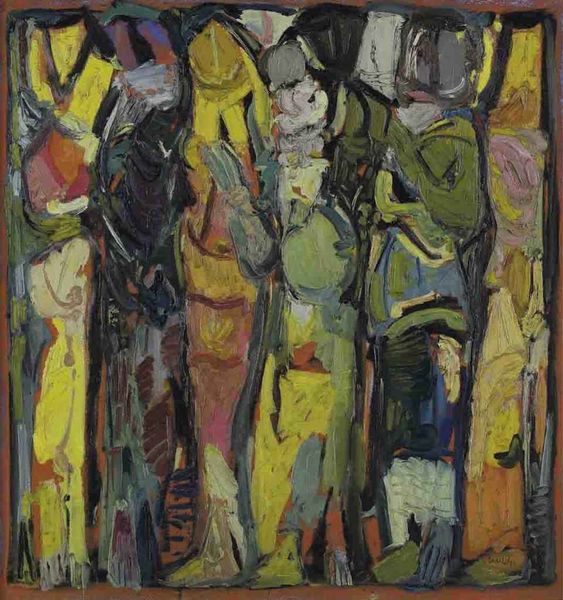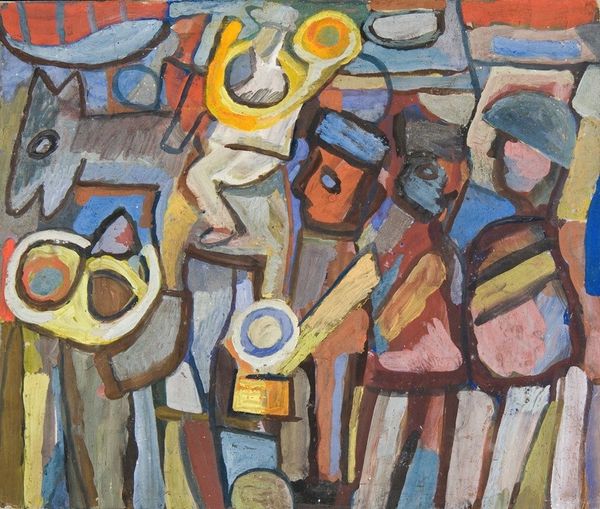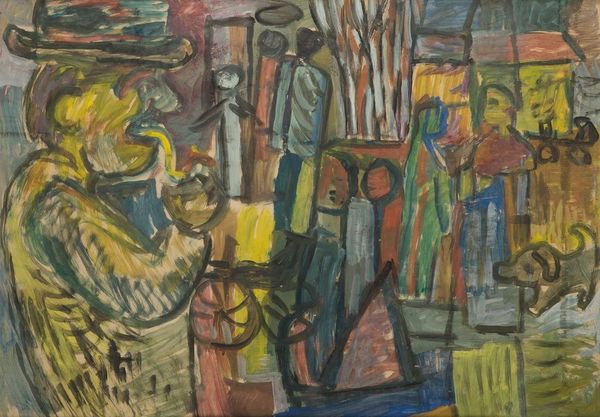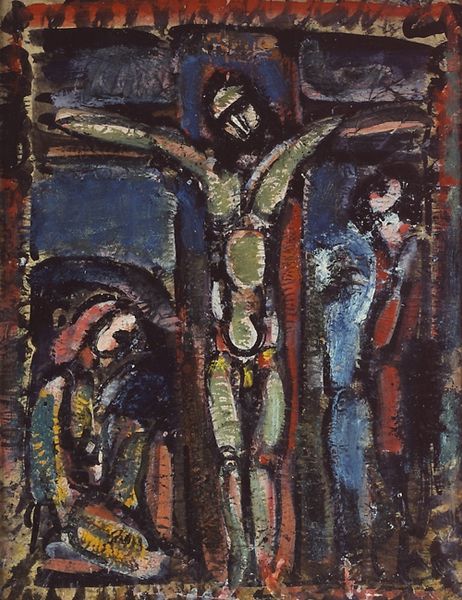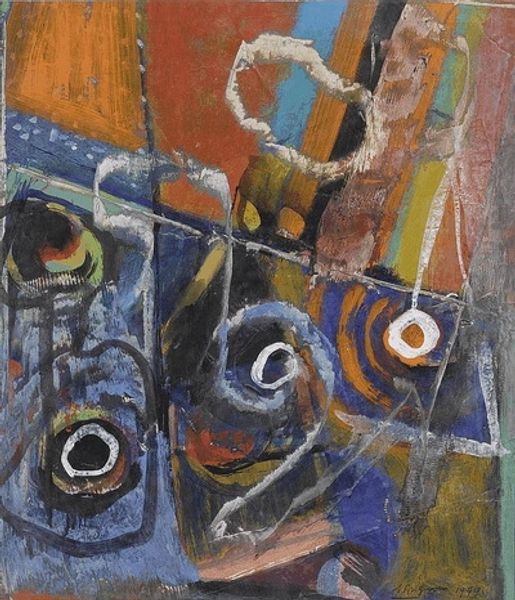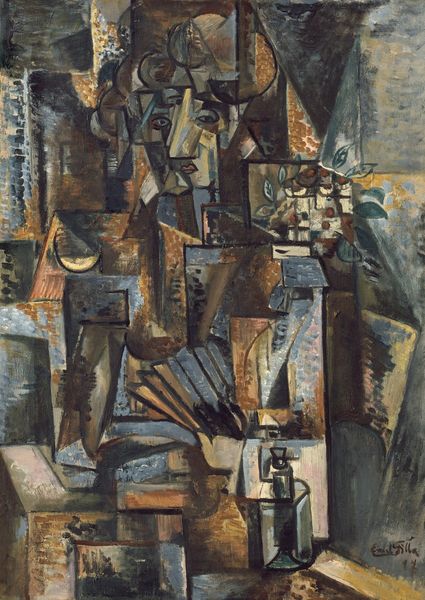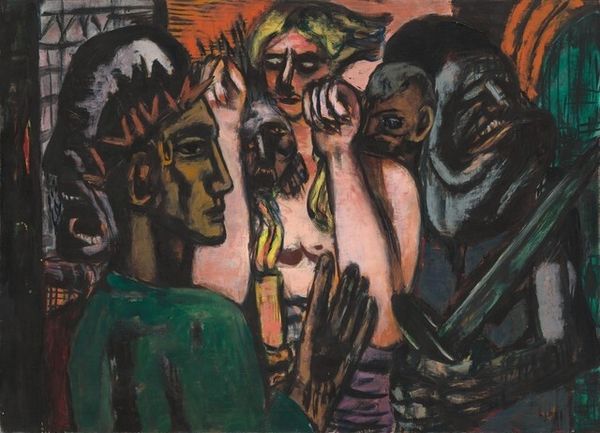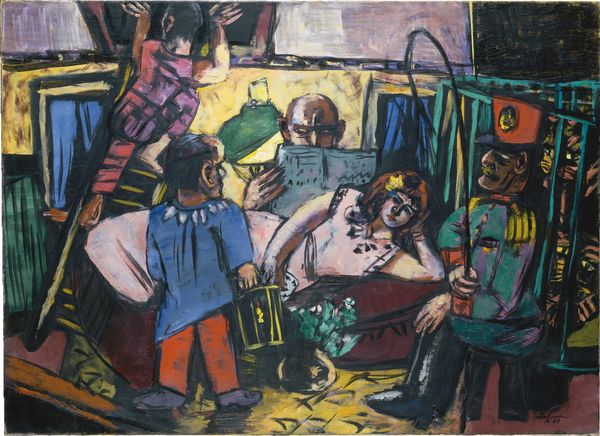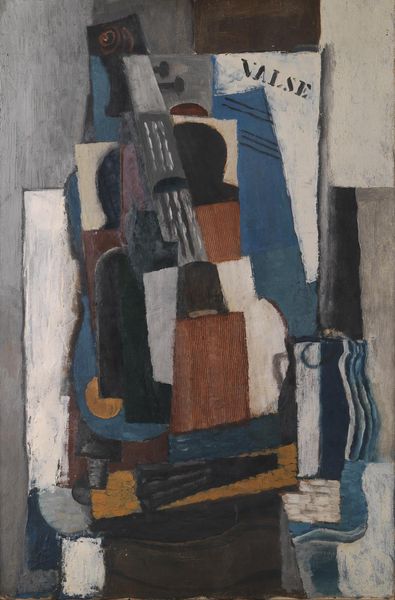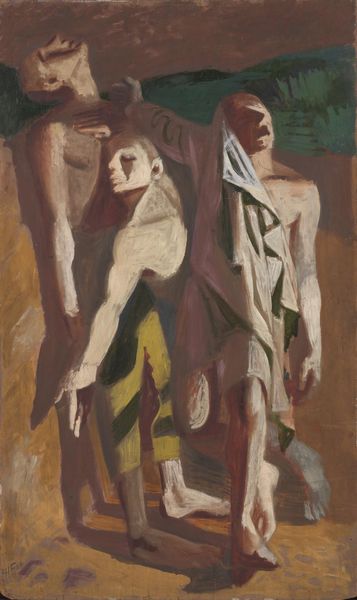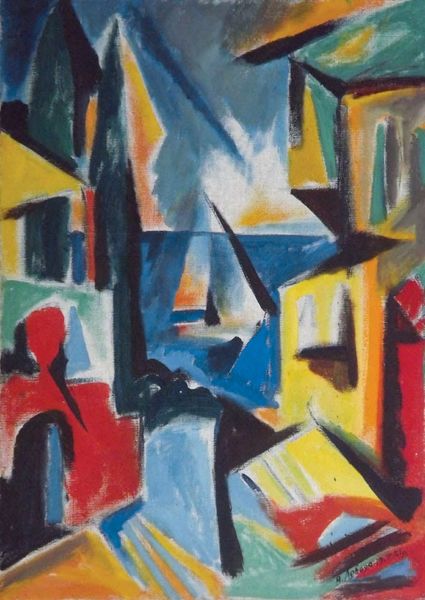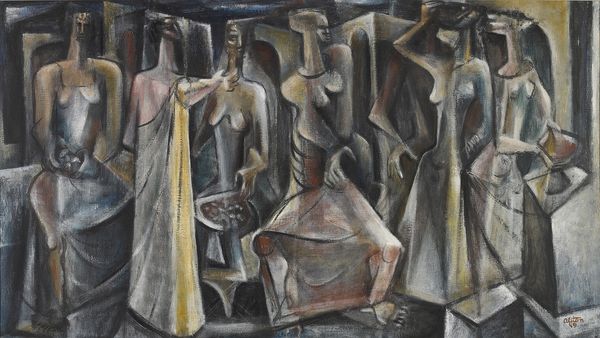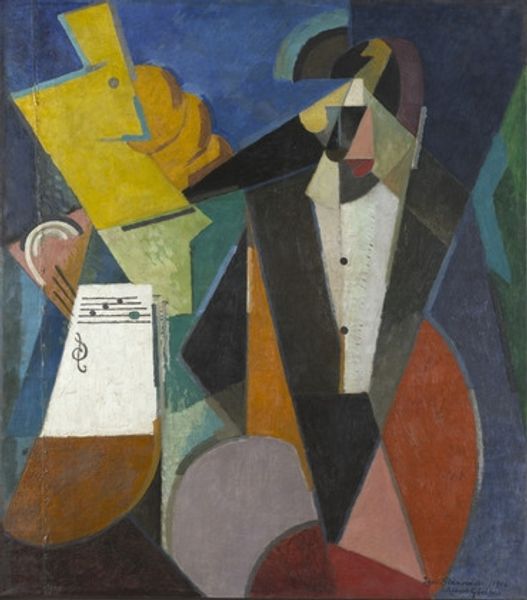
Dimensions: overall: 80.9 x 63.8 cm (31 7/8 x 25 1/8 in.)
Copyright: National Gallery of Art: CC0 1.0
Editor: This oil painting from 1935 is called "Untitled (musicians)" by Mark Rothko. The muted palette and the crowding of figures certainly evokes a somber mood. What do you see in this piece? Curator: Well, beyond the obvious figures and instruments, I see a representation of a community, perhaps on the cusp of immense change. Notice how Rothko obscures individual faces; they almost become archetypes. This resonates with the anxieties present in the 1930s – a period defined by economic depression and the rise of totalitarian ideologies. Does the compression of the figures feel psychologically charged to you? Editor: Definitely. There’s a sense of being overwhelmed, a lack of personal space perhaps. The figures are nearly stacked on top of each other. Curator: Precisely. It’s interesting to consider that while Rothko later moved toward pure abstraction, in these early works he grappled with the figure to convey universal experiences and anxieties. The figures almost become symbols themselves, stand-ins for larger anxieties. Are there any specific symbols or compositional elements that strike you as particularly effective in conveying these cultural anxieties? Editor: The cellos are quite prominent and heavy-looking, maybe representing a burden or sadness. And the dark outlines around everything create a claustrophobic feel. Curator: Indeed. The recurring visual symbols such as musical instruments represent culture; but these musicians don't have much individual expression. These symbols feel simultaneously familiar and distant, perhaps a cultural memory slipping away? This connects with broader historical trends like cultural preservation. Considering the history helps us understand art's cultural meaning, as well as the artist's own vision. Editor: I’ve never thought about early Rothko’s figures in that way before – as stand-ins for cultural anxieties. It provides a powerful new lens for understanding not only his early works, but also the shift into abstraction. Curator: Agreed. It demonstrates that even seeming departures from figuration can retain potent symbolic weight, subtly reflecting deeper cultural anxieties or yearnings.
Comments
No comments
Be the first to comment and join the conversation on the ultimate creative platform.
